The Samsung Galaxy Note5 and Galaxy S6 edge+ Review
by Joshua Ho on October 2, 2015 8:00 AM ESTSystem Performance
While subjective judgments of performance may be possible to make when the delta is significant, when the gap gets increasingly close within the range of perceivable performance differences it becomes important to rely on more precise and accurate methods of measuring the overall performance of the mobile device. For the most part, when we’re discussing system performance the single biggest factor is often the SoC, which makes sense given that an SoC contains the CPU, GPU, video encode and decode blocks, memory bus, and DSPs. There are other aspects of the device that determine the overall perception of performance and things that can have a meaningful effect on performance, but the SoC is often the gating factor.
In order to test this we run mobile devices through our standard suite of benchmarks. In the case of the Galaxy Note5 and Galaxy S6 edge+, there shouldn’t be too many surprises given the commonality in components with the Galaxy S6.
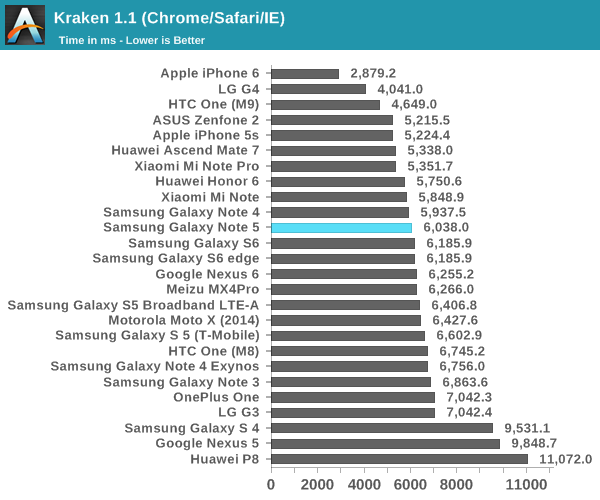
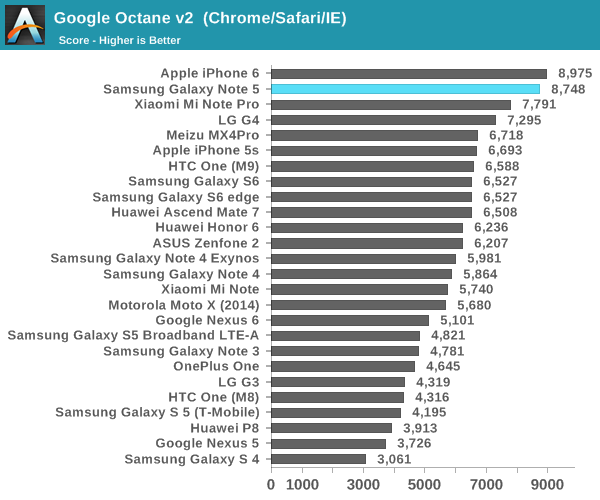
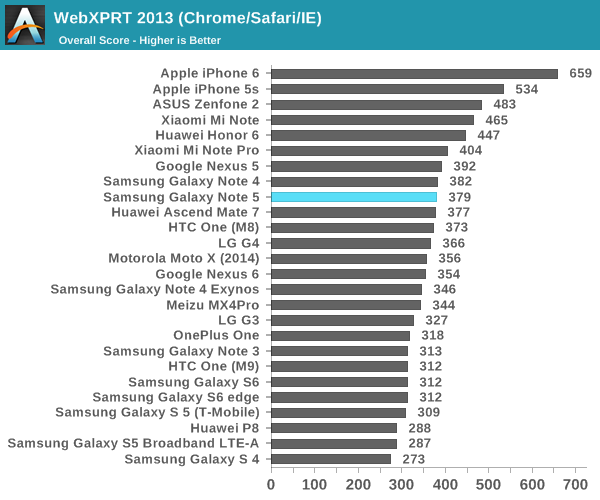
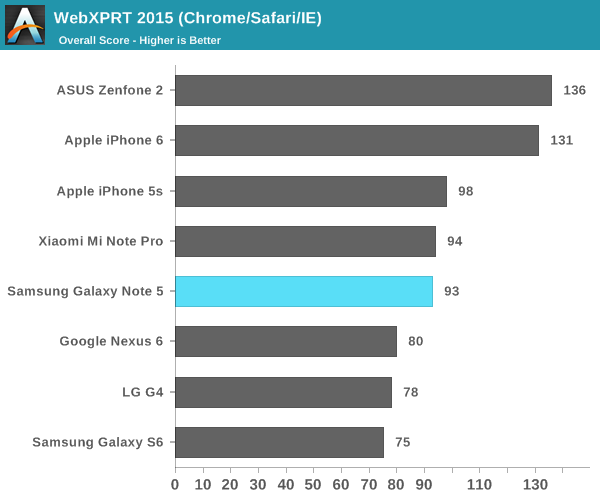

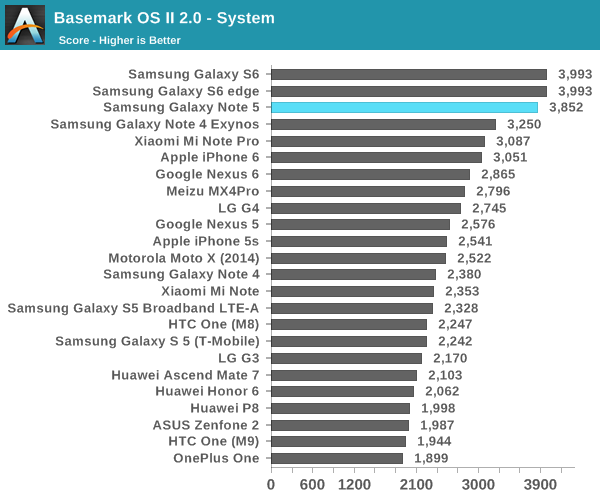
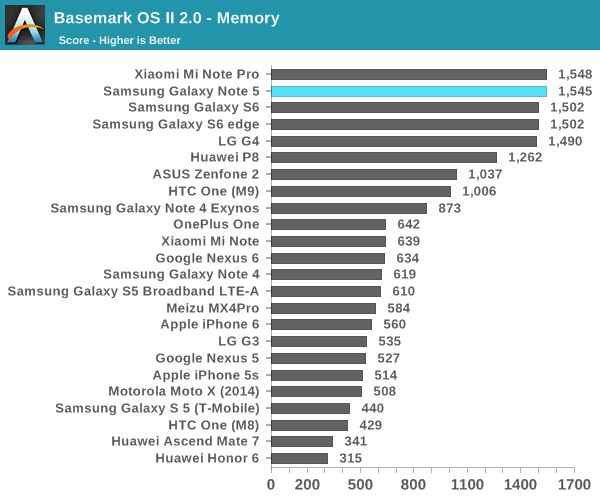
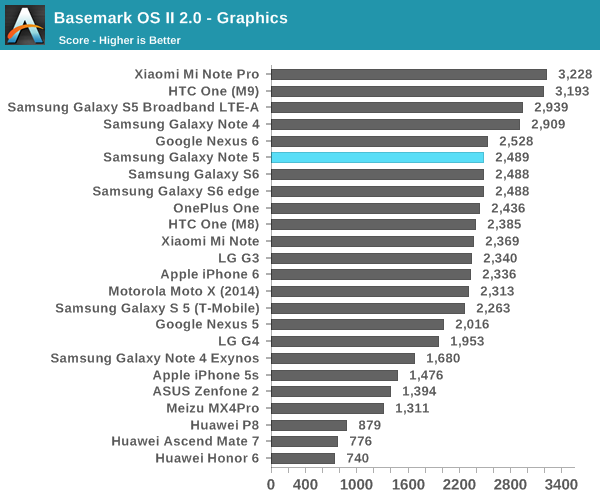

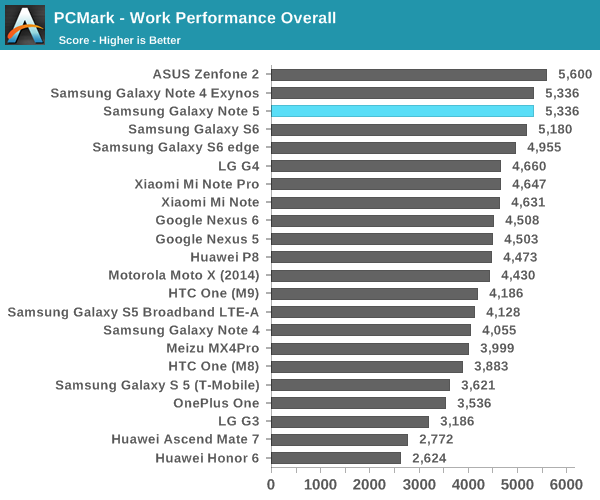

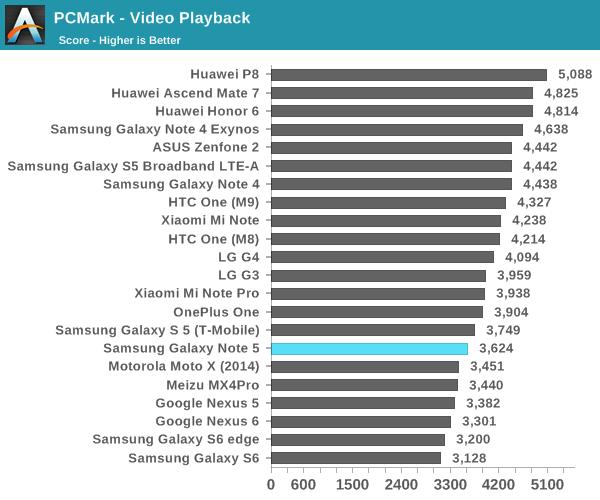
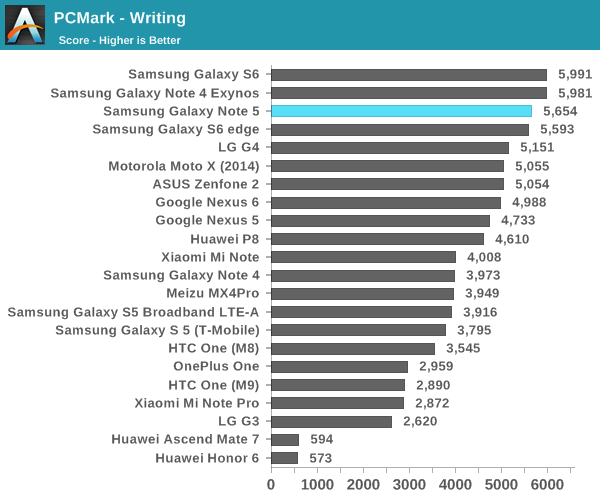
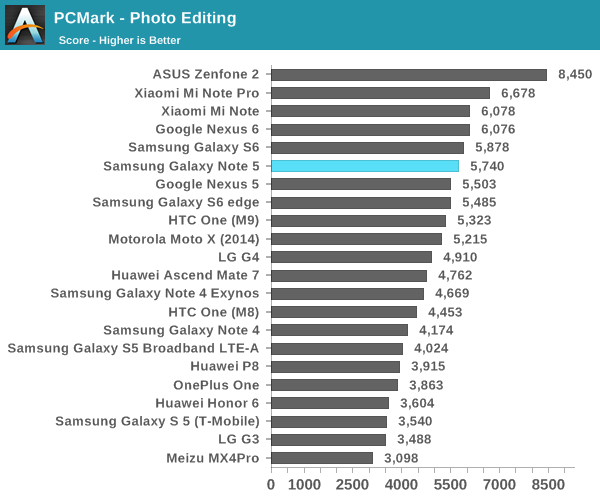
If you guessed that performance in these benchmarks would be similar to the Galaxy S6, you'd be right. Given the shared SoC and general commonality in components performance remains as high as it is with the Galaxy S6. In some cases we see improvements, likely a combination of changes to Chrome and changes to areas like the frequency governor to respond faster to changes in load. It's probably fair to say that the Exynos 7420 will continue to be the best SoC for Android mobile devices in 2015, although it's likely that we'll see significantly increased competition for 2016.










225 Comments
View All Comments
JoshHo - Friday, October 2, 2015 - link
This is with auto-boost. Given that the majority of people will only use auto-brightness the maximum brightness listed is achievable.Endgame124 - Friday, October 2, 2015 - link
Just read through the whole article. Did I miss a section regarding mobile data and call reception? Wifi performance is detailed, which is fine, but honestly, if I'm at home or somewhere where I know there is going to be wifi, I'll just bring my tablet.#1 most important feature on a smart phone? Reception. Its maddeningly difficult to get good comparisons across phones when it comes to reception for data and call quality / handlng.
JoshHo - Friday, October 2, 2015 - link
I agree that reception quality is important, but the issue here is that proper testing is an enormously difficult task. This is something that I want to resolve but I'm not sure how long it will take.Peichen - Monday, October 5, 2015 - link
Agreed about very difficult to test because the balls/bars on display doesn't really represent real dB.tipoo - Friday, October 2, 2015 - link
Sup with the Samsung NAND results getting nuked? In the GS6 review they were head and shoulders above the rest of the Android camp, now they're upper-middling. Different settings?Ryan Smith - Friday, October 2, 2015 - link
Different NAND.JoshHo - Friday, October 2, 2015 - link
To add on to this, the main difference is that we're only showing a single IO thread and QD=1 to avoid unnecessarily penalizing eMMC as we found that multiple IO threads is usually an unrealistic workload and that it would negatively affect eMMC performance.syxbit - Friday, October 2, 2015 - link
If the Note series are going to use the same SoC as the Galaxy S series, it would make sense to release them at the same time. Like Apple does.I was disappointed to see that the Nexus 6P uses the SD810. It's far worse than the competition. Since I like Android, and dislike Touchwiz, I have little choice. 2015 has been a bust for all SoC vendors except Samsung and Apple....
Kuzi - Saturday, October 3, 2015 - link
Syxbit, I own an Xperia Z4 Tablet that runs on SD810 v2.1, this newer version doesn't suffer from the overheating and excessive throttling issues first found on the HTC M9, and performance is around 10% higher.I compared it with my Galaxy S6 and found performance pretty similar, the Xperia is actually slightly faster in GFX Bench and 3Dmark graphics tests. The GS6 has slightly faster CPU and IO performance. But overall performance is great, and that is running 2560x1600 resolution.
My guess is that all newer devices released after June/July this year are running the improved SD810 V2.1. So Nexus 6P will surely run on this.
Ziich - Saturday, October 3, 2015 - link
I don't really know which doc you were expecting. i don't think the 820 is ready and i don't think samsung is selling their exynos soc to other oems